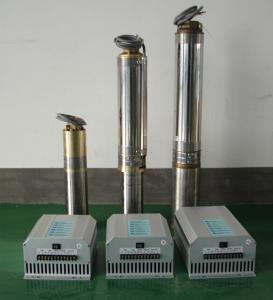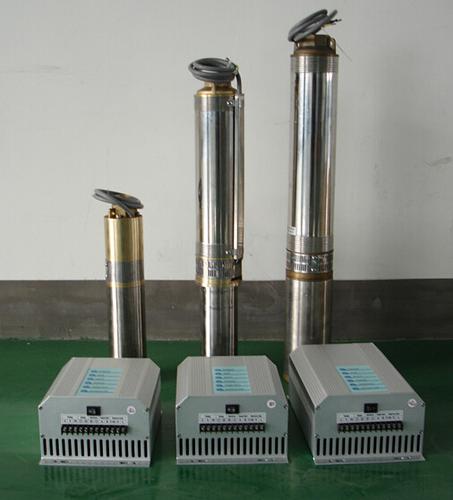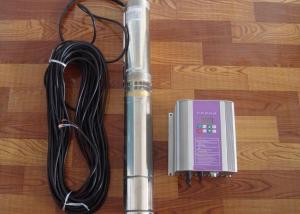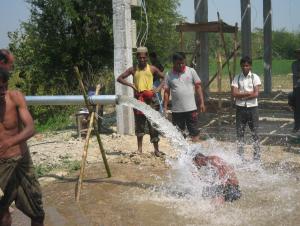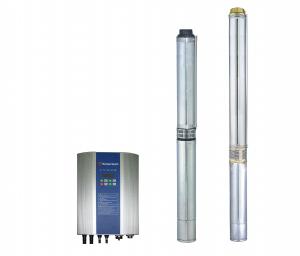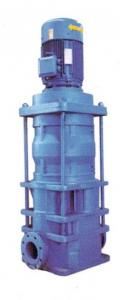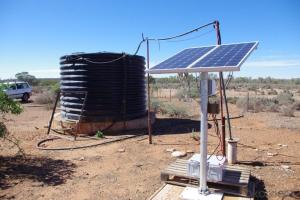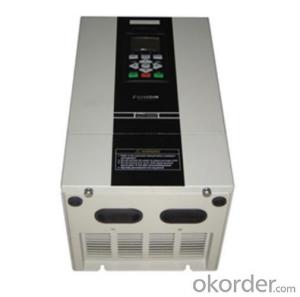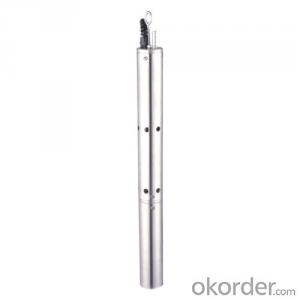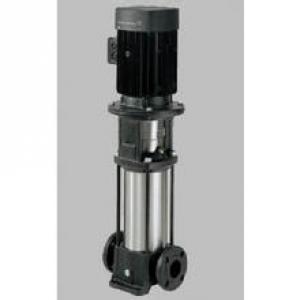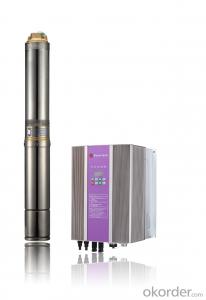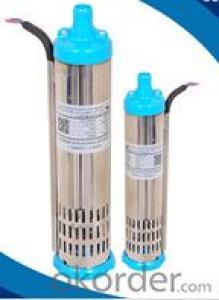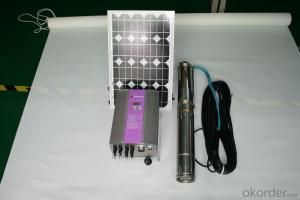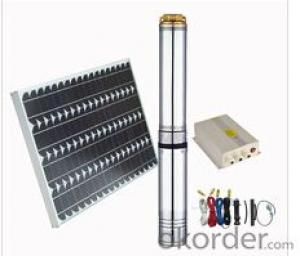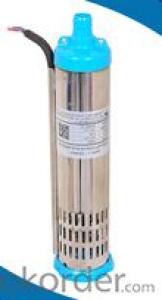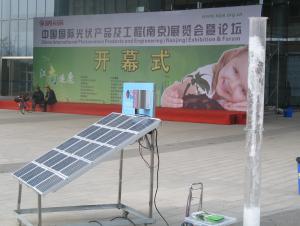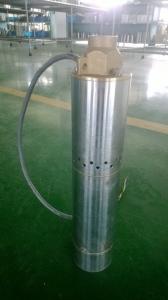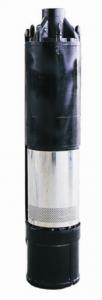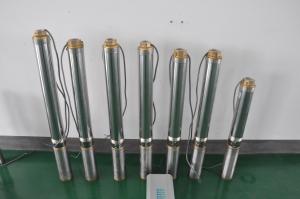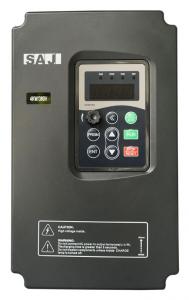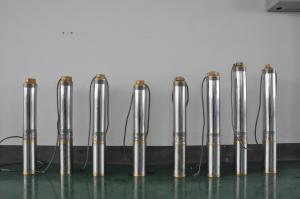Best Solar Pump
- Loading Port:
- China Main Port
- Payment Terms:
- TT OR LC
- Min Order Qty:
- -
- Supply Capability:
- -
OKorder Service Pledge
OKorder Financial Service
You Might Also Like
Item Description :
This superb new addition to our solar fountain range comes with a 10w solar panel,and a powerful fountain pump that is capable of producing fountains of up to 2m in height. As well as being easy to set up and use.Instruction manual is supplied for assembly and maintenance.
Solar Fountain Key Features :
Powered by direct sunlight
No high voltage electric mains required
Safe for children
Max. height of fountain: 2M
Max. flow capacity: 800 L/H(176 GAL)
10W Polycrystalline solar panel included
18V DC brushless pump
Solar Pump Features :
Can produce fountains up to : 2M (tube height) 1.4M (fountain height)
Comes with multiple nozzle accessories
Cable Length : 5M
Solar Panel Features :
10W peak power.
Polycrystalline highly efficient solar panel
Comes mounted in aluminium frame
Comes with ground stake and rotating knob so you can angle your panel toward the sun
What You Will Get :
10W solar panel
Solar pump
Ground Sake
Nozzle accessories
Precautions :
DO NOT alter or change the product itself or its components
Operate pump in freshwater only, never above 50 degrees celsius
Keep away from flammable liquids
Do not connect to any other power supply other than the included
- Q: Are there any regulations on the disposal of solar pump components?
- The disposal of solar pump components is regulated by various environmental regulations and guidelines to ensure proper handling and minimize the impact on the environment. In the United States, for example, the Environmental Protection Agency (EPA) oversees the disposal of electronic waste, which includes solar pump components. The EPA has established specific guidelines and regulations to prevent the release of hazardous materials into the environment. In addition to federal regulations, many states and local governments have their own regulations on the disposal of electronic waste, including solar pump components. These regulations require individuals and businesses to recycle or dispose of electronic waste through approved channels, such as licensed recycling facilities or collection events. It is important to note that solar pump components may contain hazardous materials, such as lead, cadmium, or mercury. These materials can be harmful to human health and the environment if not disposed of properly. Therefore, it is crucial to follow the regulations and guidelines set forth by the relevant authorities to ensure the safe and environmentally friendly disposal of these components. To determine the specific regulations applicable to the disposal of solar pump components in a particular area, it is recommended to consult with local environmental agencies, waste management authorities, or recycling facilities. These entities can provide accurate and up-to-date information on the proper disposal methods and any specific regulations that must be followed.
- Q: Are solar pumps suitable for both residential and commercial use?
- Yes, solar pumps are suitable for both residential and commercial use. They are an efficient and environmentally-friendly option for pumping water in various applications, including irrigation, livestock watering, and water supply for residential, commercial, and agricultural purposes. Solar pumps can be easily installed and operated, making them a versatile choice for both small-scale and large-scale water pumping needs.
- Q: Can a solar pump be used for firefighting or emergency water supply?
- Yes, a solar pump can be used for firefighting or emergency water supply. Solar pumps are an efficient and reliable solution for pumping water from a source such as a well, river, or reservoir. They can be powered by solar energy, which makes them independent of the grid and suitable for remote locations or during power outages. Solar pumps are capable of delivering high volumes of water and can be an effective tool in firefighting or emergency situations where a quick and sustainable water supply is needed.
- Q: Are there any limitations on the size of the water source for a solar pump?
- Yes, there are limitations on the size of the water source for a solar pump. The size of the water source should be adequate enough to ensure a continuous and sufficient supply of water to the pump. Additionally, the pump's capacity and efficiency may also affect the suitability of the water source, as larger water sources may require higher capacity pumps to effectively utilize the available water.
- Q: Can a solar pump be used for water treatment or purification?
- Yes, a solar pump can be used for water treatment or purification. Solar pumps use energy from the sun to power the pumping mechanism, allowing water to be moved from one location to another. This can be particularly useful for water treatment or purification processes, as it eliminates the need for external power sources and reduces operating costs. Solar pumps can be used in various water treatment or purification applications, such as pumping water from a well or borehole to a treatment facility, or moving water through different treatment stages, such as filtration, disinfection, or desalination. They can also be used to circulate water in a treatment system to ensure proper mixing and contact time with treatment chemicals or processes. Using a solar pump for water treatment or purification offers several advantages. Firstly, it is a sustainable and environmentally friendly solution as it relies on renewable energy. Secondly, solar pumps can be installed in remote or off-grid areas where access to electricity is limited or nonexistent. This makes them suitable for rural communities or developing regions that lack infrastructure. Furthermore, solar pumps are often more cost-effective in the long run compared to traditional pumps, as they have lower operational and maintenance costs. They also provide a reliable and continuous water supply, even during power outages or fluctuations. However, it is important to note that the use of a solar pump alone may not be sufficient for comprehensive water treatment or purification. Depending on the specific requirements and quality of the water source, additional treatment processes or technologies might be necessary to ensure safe and potable water. In conclusion, a solar pump can certainly be used for water treatment or purification, offering a sustainable, cost-effective, and reliable solution for various applications.
- Q: Can a solar pump be used in off-grid locations?
- Yes, a solar pump can be used in off-grid locations. It relies on solar energy to power its operations, making it a suitable choice for areas without access to electricity. The solar panels collect energy from the sun, which is then converted into electricity to operate the pump. This makes it an environmentally friendly and cost-effective solution for pumping water in remote or off-grid locations.
- Q: Can a solar pump be used in areas with limited water sources?
- Yes, a solar pump can be used in areas with limited water sources. Solar pumps are designed to operate using solar energy, making them suitable for remote locations where access to electricity may be limited. They can be used to extract water from wells, rivers, or any available water sources, providing a reliable and sustainable solution for water supply in areas with limited resources.
- Q: How do solar pumps handle water with high fluoride or chemical content?
- Solar pumps do not have a specific mechanism to handle water with high fluoride or chemical content. However, the filtration system used in solar pumps can help remove some impurities from the water, including certain chemicals and contaminants. It is important to note that the effectiveness of this filtration process may vary depending on the specific chemicals or fluoride levels present in the water. In cases of extremely high levels, additional treatment methods might be necessary to ensure the water is safe for consumption or other purposes.
- Q: Can a solar pump be used for water circulation in cooling systems?
- Water circulation in cooling systems can be achieved using a solar pump. These pumps are specifically designed to operate on solar power, allowing them to function independently of the power grid. This makes them an environmentally-friendly and cost-effective choice for water circulation in cooling systems, particularly in areas with ample sunlight. Solar pumps can effectively circulate water through various cooling components such as heat exchangers, radiators, and others, which aids in heat removal and maintaining ideal temperatures within the system. They are commonly utilized in solar water heating systems and can also be employed in air conditioning units and industrial cooling procedures. Overall, solar pumps provide an efficient and eco-friendly solution for water circulation in cooling systems, resulting in reduced energy consumption and environmental impact.
- Q: What is the maximum temperature a solar pump can withstand?
- The maximum temperature a solar pump can typically withstand is around 60 to 70 degrees Celsius.
Send your message to us
Best Solar Pump
- Loading Port:
- China Main Port
- Payment Terms:
- TT OR LC
- Min Order Qty:
- -
- Supply Capability:
- -
OKorder Service Pledge
OKorder Financial Service
Similar products
Hot products
Hot Searches
Related keywords
